
Students explore the right to education and the battle that ensued to end centuries of unequal opportunities for African-Americans.
- Subject:
- Social Studies
- Material Type:
- Lesson Plan
- Provider:
- PBS
- Date Added:
- 08/28/2018

Students explore the right to education and the battle that ensued to end centuries of unequal opportunities for African-Americans.

This unit explores the way in which historical events have shaped American history.
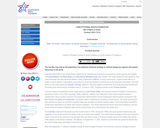
In this lesson, students will examine the background and contents of the Bush Doctrine. A set of discussion questions is provided. In an associated activity, students will research current African American leaders and their views on current issues. The students will debate whether or not the Bush Doctrine should be part of the U.S. foreign policy.

In this lesson, students will analyze editorial cartoons that will enable them to explain the abuses of big business and determine the effects of their abuses. Students will identify the role of labor unions in
American society and better understand the role of government in the free enterprise system.

In this lesson, students will explore the concept of diversity and why having diversity in cultures, races, languages, opinions, etc., is actually an advantage to any group. With this foundation, students will then explore issues surrounding language diversity and immigration by reading excerpts and engaging with audio and video clips from the interactive book, Talkin’ Tar Heel: How Our Voices Tell the Story of North Carolina. This lesson culminates with an activity where students create their own interactive video for Talkin' Tar Heel.

In this lesson, students will examine political cartoons from 1979-1990 and analyze the events and issues leading up to the collapse of the USSR.

In this activity, students read and discuss excerpts from a slave autobiography.
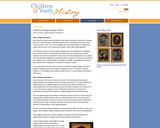
In this lesson, students examine daguerreotypes of children in order to demonstrate how images are socially constructed and to identify the changing role of children in American society during the 19th century. Students will also compare and contrast these images with contemporary photographs. In the culminating activity, students are asked to write a paragraph in which they make a brief argument - including a thesis and two piece of evidence in support of their proposition - about childhood in the 19th century based on the daguerreotypes.

In this activity, students analyze a comic strip from the early 1900s. The image serves as a jumping off point for further discussion of the rapid rise of mass popular culture in American cities in the early 20th century. As an extension, students can be asked to research and write a short report on another example of 20th century visual culture that explores some of the same themes.
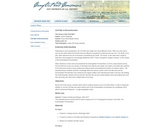
In this lesson, students will see that the Civil War did not have clearly defined moral and political lines and that, like every war, there were multiple sides to the story. By the end of this lesson, students will be able to analyze primary source Civil War letters in order to determine whether or not the Civil War was about slavery prior to the Emancipation Proclamation by completing a BCR (Brief Constructed Response - a single paragraph essay).

This resource discusses the problem with Reconstruction.
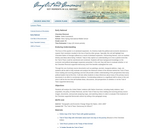
In this lesson, students will analyze the United States' relations with Native Americans, including treaty relations, land acquisition, the policy of Indian Removal, and the Trail of Tears by close reading and sourcing primary source images, documents, and journals analyzing maps, and watching videos in order to evaluate if the treatment of the Cherokee supported democratic actions by writing a five paragraph essay.

With this digital collection, students will explore the subject of Chicago and the Great Migration through four specific topics: the race riots of 1919, travel, literary culture, and community organizing. Historian Arnold R. Hirsch explains in The Encyclopedia of Chicago that the covenants were “rare in Chicago before the 1920s, their widespread use followed the Great Migration of southern blacks.”

In this activity, students examine a photograph and answer a series of questions. The questions are designed to guide students into a deeper analysis of the source and sharpen associated cognitive skills.
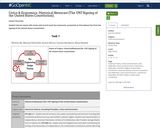
Student learner teams will create and record mock live newscasts, presented as if broadcast live from the signing of the United States Constitution.

In this lesson, students will analyze three different speeches from the civil rights movement during the 1950s and 1960s. Students will be allowed to choose between three different speakers (JFK, MLK, and Malcolm X) in order to decipher different views on civil rights and liberties in America.

In this lesson, students will use editorial cartons dealing with the American Civil Rights movement in order to determine some of the major aspects of this social movement. They will discuss a pair of cartoons in groups and present their findings to the class.

The purpose of this lesson is to help students understand how landowners and freedmen met their needs following the Civil War through sharecropping. Students will also gain an understanding of the challenges that came along with being a sharecropper and become aware of the disparity that remained between freedmen and landowners despite the end of slavery.

In this activity, students study a civilian defense pamphlet and answer a series of questions. The questions are designed to guide students into a deeper analysis of the source and sharpen associated cognitive skills.

In this lesson, students read about how the British and French clashed over control of the North American interior during the 1700s. A set of discussion questions is provided. In an associated activity, students will role play five groups that had a stake in North America just before the outbreak of the French and Indian War in 1754.